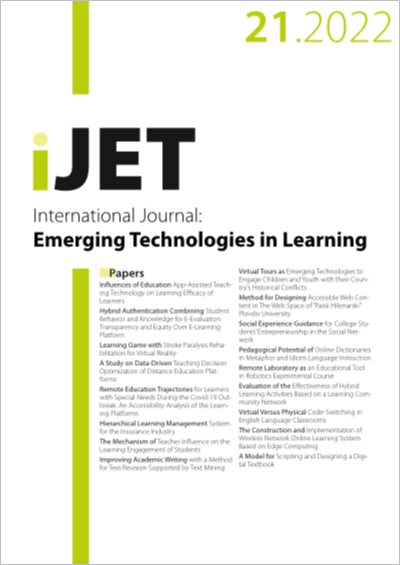The Construction and Implementation of Wireless Network Online Learning System Based on Edge Computing
DOI:
https://doi.org/10.3991/ijet.v17i21.33029Keywords:
edge computing, network device virtualization, virtual network device, wireless network physical teaching systemAbstract
The traditional wireless network laboratory constructed with physical equipment prompts two obvious problems: high hardware investment and long experiment deployment time. To address these issues, this study proposed a novel Wireless Network Physical Teaching System (WNPTS) based on Edge Computing (EC). Firstly, the isolation design of in-band and out-band network avoids the interference between management data and experimental data. Secondly, this study designed a unified experimental resource description method based on XML format, which is parsed and executed by parser and topology switcher to realize the rapid deployment of the experimental environment. In the edge computing layer, multiple Virtual Network Devices (VNDs) were implemented on one physical network device through the following mechanisms: in the process space, each virtual device used an independent working directory and files to build an application software cluster dedicated to each VND. In physical space, this study designed a novel fast-forwarding mechanism, which takes each switch engine chip as one allocation unit and maps the forwarding table in the kernel space to realize the fast data forwarding for each VND. Statistical analysis shows that, compared with traditional approach, WNPTS reduced the total fixed investment cost by 30.25%, shortened the Average Deployment Time of Experimental Environment (ADTEE) from 18.3 minutes to 2.75 minutes, and improved the Timely Completion Rate of Experiments (TCRE) from 59% to 70%.
Downloads
Published
How to Cite
Issue
Section
License
Copyright (c) 2022 Jingmin Yang, Dr. Prof. Trong-Yen Lee, Dr. A.P. Wen-Ta Lee, Dr.Prof. Li Xu

This work is licensed under a Creative Commons Attribution 4.0 International License.



